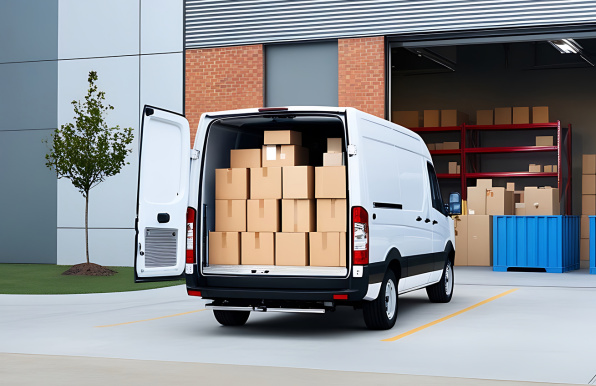- Logistics
A Comprehensive Guide to Delivery Instructions
The art of delivering goods and services has evolved remarkably in the era of digitalization. There was a time when getting a package or a meal delivery was so stressful. But now, with the developed delivery system, the recipient can be rest assured.
The core of this evolution is a simple element: Delivery Instruction.
Though it might seem simple, giving clear & accurate delivery instructions can make all the difference in the delivery process.
According to a survey, without delivery instructions,
26% of customers had experienced a parcel arriving late
13.6% had a package left in an unsafe location
13.4% received a damaged parcel
These stats are clearly defining how delivery instructions can make all the difference.
Studies also suggest that to offer a better delivery experience, it’s important to consider what customers want from the service. And that can be done when proper delivery instructions are communicated.
In this comprehensive guide to delivery instructions, let’s dive and explore the significance, evolution, and change delivery instructions bring.
Understanding Delivery Instructions
Delivery Instructions are the guidelines for your hassle-free deliveries! These are basically the set of instructions provided by the recipient to the delivery agents, guiding them to drop off your packages exactly where and how you want them.
It makes the delivery seamless!
For example -
You order a Pizza, and you don’t want the delivery folk to call you for delivery or ring a bell to deliver your order, or you just don’t want them to get confused with your address. That’s where the delivery instructions come in to save the day!
So, you just guide them - you simply put some instructions like landmark details or tell them to leave the order at the door or any other personalized instructions.
With these guidelines, your delivery will be just how you want it, as you will be the mastermind behind the smooth execution. In online orders, food delivery, and many more, instructions are crucial to facilitate a seamless delivery. It enhances the customer experience by reducing errors or misunderstandings.
Key Components of Effective Delivery Instructions
Now, it might seem simple, but writing effective delivery instructions requires some knowledge. For that, there are some key components to help you write effective delivery instructions to your delivery folks.
1. Clear and Easy-to-understand Language
Clear and easy-to-understand or to-the-point language makes delivery instructions more effective & communicative. It reduces the chances of any confusion or misinterpretation.
Your delivery instructions should be described in a way that can be easily understood by you as well as the delivery personnel. So, avoid tough, technical terms or highly complex language for a seamless delivery.
For instance, if you want a package to be left at a specific location, instead of saying,
“Please deposit the parcel at the designated point,”
Make clear instructions, like - “Kindly place the package at the front door.”
2. Address Details
An accurate address is crucial to ensure your delivery partner reaches your destination without any issues. In this case, you instruct about a landmark or describe how to reach the destination.
With an up-to-date and complete address detail, including landmarks, house no., nearby streets, etc., the chances of reaching your destination become fuller.
For example, instead of just providing an incomplete address like “123 Main Street”, write a proper detail -
"123 Main Street, Apartment 4B, Oakwood Apartments, buzz code 567."
3. Contact Information
With address details, sharing valid contact information facilitates seamless communication between the recipient and the delivery personnel. Providing a phone number makes you rest assured, as in case of any issues like difficulty locating the address or needing more instructions, the delivery personnel can reach out to you easily!
Moreover, if you don’t wish to share your contact information, you can provide an alternative mode of communication, like an email address.
For example, "In case of any delivery issues, please call/text me at 555-123-4567 or abc@gmail.com," ensuring direct communication.
4. Special considerations
Special Considerations involves any specific or special request you wish to make to the delivery personnel. It sometimes includes asking,
The delivery person to deliver your order at a different location than the address mentioned,
To knock on the door, or
To turn off their engine upon arrival.
For such special considerations, you just need to provide an instruction in a requesting manner, like - “A request to kindly turn off your engine upon arrival.”
5. Timing
According to surveys, untimely delivery has the biggest negative impact on customer experience. Around 31% of people are highly frustrated with delivery arriving unexpectedly.
To avoid this, finalizing the mutual timing for delivery is best for both the recipient and the delivery personnel. This particularly applies when the recipient needs to be present at the destination to receive the delivery or when the delivery involves time-sensitive items.
To provide an instruction for a timeframe for the delivery, try writing the delivery instructions like - "Please deliver between 2 PM and 4 PM on August 10th."
How to Write Delivery Instructions - Do’s & Don'ts
A) Do’s
Different types of orders require different delivery instructions. Such as -
1. Online Orders
When placing orders online, clear delivery instructions are required to ensure the package arrives in excellent condition and on time.
Here are some tips e-commerce customers can try -
- Product Details - If you are ordering multiple products, specifying which item requires special handling or specific delivery requirements will be helpful.
- Delivery Location - If you have to specify a preferred location for delivery, provide clear directions. Also, specify what to do when you are not present at that time - “package can be left in a safe location.”
- Signature requirements - If you are supposed to sign for the delivery, mention that in your instructions. Also, add the opposite part if you’re comfortable with a safe drop-off without a signature.
- Fragile Items - If you have ordered any fragile product, instruct the delivery personnel to handle them with care. Include phrases such as “Fragile: Handle with care” or “Delicate Items enclosed.”
- Delivery timing - If you have some time constraints, like being available only during certain hours, include the timings, too!
2. Food Orders
Similarly, when ordering food for delivery, some effective instructions are required to ensure your meal arrives the way you want.
- Dietary Preferences - You can clearly state any dietary restrictions or allergies you have when ordering the food. Restaurants often cater to special requests, but you need to specify these in advance.
- Contact Information - Provide your phone number so the delivery person can reach you if needed.
- Temperature Concerns - Usually, it takes time to deliver an order, so for temperature-sensitive orders, you must specify the delivery person to deliver the food quickly.
- Delivery Location - Specify where you want the delivery person to deliver your food. For example, write like “Please deliver to House no. 806, near Iris 2 building, ABC street.” This surely saves time and confusion.
- Delivery Time - Let them know if you have a preferred delivery time. Write an instruction like “I’d love the food to arrive around [preferred time], if possible.”
3. Package Deliveries
Packages sometimes get damaged or stolen during delivery, and to ensure the security of your package delivery, write guidelines properly.
- Delivery Instructions - Specify where you would like your package to be left. If you are worried it will be stolen, ask the delivery personnel to place the package at a specific location or a safe spot.
- Signature - If you wish to sign for the package in person, convey it to the delivery person, or if you are okay with the package being delivered with a neighbor or them signing for it, mention that, too!
- Security Code - If your street or residence has a security guard or security code, provide the information to the delivery person for smooth entry.
B) Don’ts
Don’t write long paragraphs, as they can be overlooked
Don’t use unclear, hard-to-understand, or confusing language
Don’t use offensive or inappropriate language - be respectful and polite
Don’t mention not-so-important or unnecessary details - stick to the essentials
Don’t overcomplicate things, as they might be difficult for the delivery person to follow
Don’t make unrealistic requests or requests that might be difficult or impossible for the delivery person to fulfill.
Don’t use negative words like ‘don’t want,’ etc. - instead, focus on what you want & positive words
Don’t forget to say thank you at the end of your instructions.
Role of Technology In Seamless Delivery Instructions
Technology plays a crucial role in enhancing the overall efficiency and accuracy of delivery processes. It ensures smooth delivery in various ways, such as -
Mobile Apps: Many mobile apps are available nowadays to order packages or things. These apps also allow users to specify their drop-off locations, provide additional details, and even set delivery time preferences.
GPS Tracking: Technology also helped with the real-time tracking of deliveries, sharing accurate information to both the sender & receiver about the delivery progress. This increases transparency while ensuring better coordination.
Voice Commands: Also, technology made providing delivery instructions hassle-free with voice commands. Recipients can verbally guide the delivery personnel or provide delivery instructions, enhancing accessibility & convenience.
Automated Notifications: Technology further allows mobile apps to provide automated notifications, keeping the receiver informed and updated about their delivery status. Apps provide notifications about estimated arrival, confirmation, and any delays.
FarEye - Delivering goods the way you want!
Overall, with convenience at its peak and customer satisfaction as a priority, delivery instructions are crucial in bridging the gap between recipient and delivery personnel.
And we at FarEye are revolutionizing the delivery process by recognizing the importance of delivery instructions. We value our clients; hence, their satisfaction and requirements are always prioritized.
With a mission to improve deliveries for everyone in the delivery value chain, we let our customers provide delivery instructions on how they want the package to be delivered. Following those, we ensure our customers relish a smooth & streamlined delivery.

Komal Puri is a seasoned professional in the logistics and supply chain industry. As the AVP of Marketing and a subject matter expert at FarEye, she has been instrumental in shaping the industry narrative for the past decade. Her expertise and insights have earned her numerous awards and recognition. Komal’s writings reflect her deep understanding of the industry, offering valuable insights and thought leadership.
Let's Talk to Our Experts and Optimize Your Deliveries Today!
An expert from our team will reach out within 24 hours



